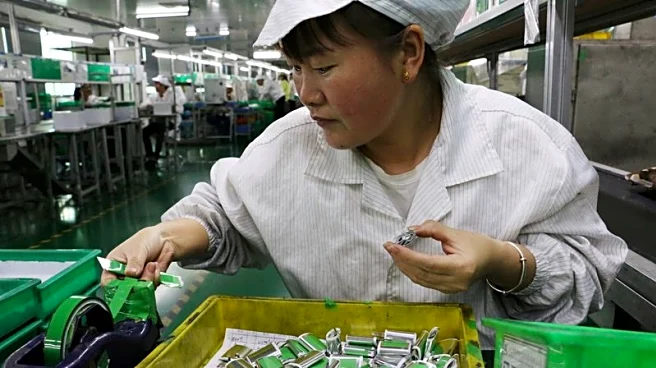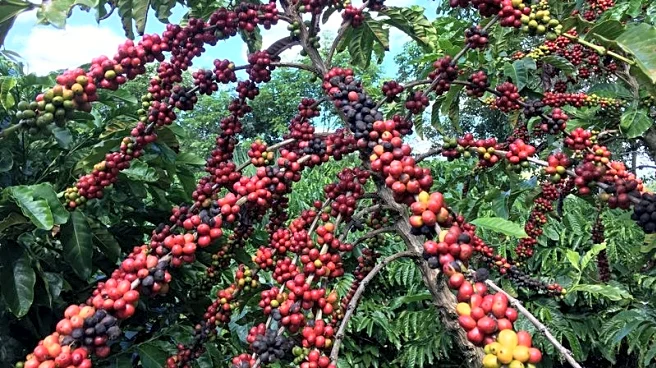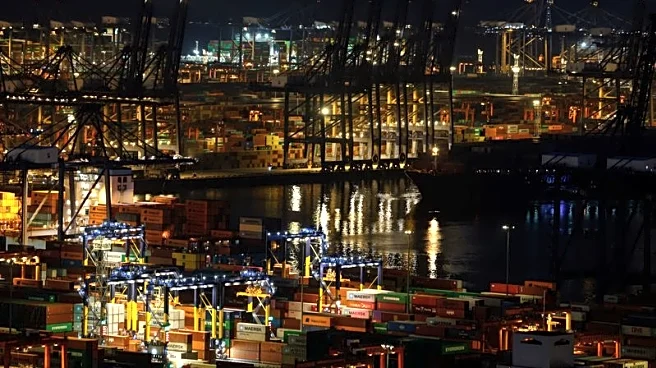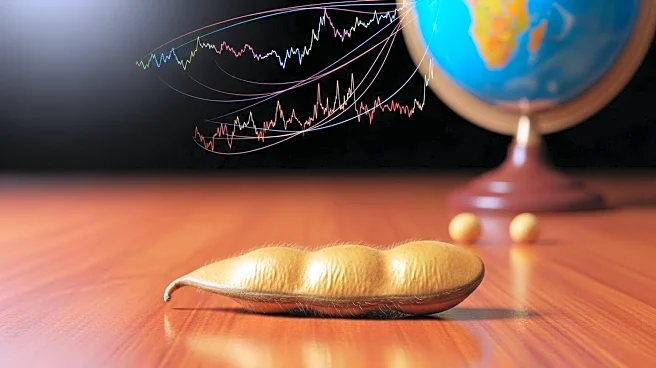What's Happening?
Soybean and grain futures in the United States have experienced a decline due to harvest pressure and market uncertainty. The ongoing harvest is progressing well, with favorable weather conditions aiding the process. According to a Reuters poll, 29% of the corn crop and 39% of soybeans have been harvested. However, the absence of government data, such as the USDA's weekly crop progress report, due to the government shutdown, has led traders and farmers to rely on private polling for information. Additionally, market uncertainty is heightened as China continues to avoid U.S. soybeans, while Brazil is poised for record-high exports. President Trump plans to meet with President Xi Jinping at the end of the month during an economic forum. Overnight trading saw soybean futures for November delivery drop by 8 cents to $10.14 1/4 a bushel, with soymeal and soybean oil futures also experiencing declines.
Why It's Important?
The decline in soybean and grain futures has significant implications for U.S. agriculture and trade. The reliance on private polling due to the government shutdown underscores the challenges faced by market participants in accessing reliable data. The ongoing trade tensions with China, a major consumer of U.S. soybeans, further complicate the situation, potentially affecting U.S. farmers' revenue and market stability. Brazil's record-high exports could shift global trade dynamics, impacting U.S. market share. The planned meeting between President Trump and President Xi Jinping may offer a platform for addressing trade issues, which could influence future market conditions. The broader economic impact includes potential shifts in agricultural pricing and trade policies, affecting stakeholders across the industry.
What's Next?
The upcoming meeting between President Trump and President Xi Jinping could be pivotal in addressing trade tensions and potentially easing market uncertainties. Stakeholders will be closely monitoring any developments or agreements that may arise from this meeting. Additionally, the continuation of the government shutdown poses ongoing challenges for accessing official agricultural data, which may lead to increased reliance on private sources. Market participants will need to adapt to these conditions while navigating the harvest season. The evolving trade dynamics with Brazil and China will also be critical factors influencing future market trends and agricultural strategies.
Beyond the Headlines
The current situation highlights the vulnerability of agricultural markets to geopolitical tensions and government disruptions. The reliance on private polling due to the government shutdown raises questions about data transparency and accuracy, which are crucial for informed decision-making. The trade dynamics with China and Brazil may lead to long-term shifts in global agricultural trade patterns, potentially affecting U.S. farmers' competitiveness. The broader implications include potential changes in trade policies and international relations, which could have lasting effects on the agricultural sector and related industries.











